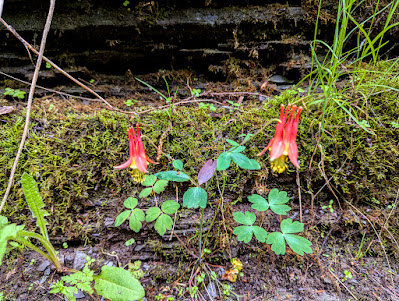One of the top 10 state parks in the US, Watkins Glen sits right beside the town of the same name, the race track of the same name and at the southern end of Seneca Lake. It is a narrow 400' deep gorge that takes the water of Glen Creek to Seneca Lake. An interpretive sign at the park tells us that it takes the water flowing in front of you 25 years to reach the Atlantic Ocean. I contemplated tossing a plastic duck in the creek but I might be 100 years old if the duck actually made the entire journey. Although there is an outlet on the southern end of the lake, most water exits at the northern end, taking it to the ocean via Lake Ontario and the St Lawrence. It is believed that recessional moraines created dams on the southern lake end during the recent Wisconsin glaciation 26,000 to 10,000 years ago.
The origins of the gorge go back to the Pleistocene glaciation two millions years ago. The ice sheet carved the Finger lakes, deepening Seneca Valley to create waterfalls and rapids. Besides creeks like Glen Creek, the lake receives most of its water from underground springs. Due to that, the lake's flow is circular preventing it to ice over. 1912 was the last time the lake froze over. Those ice sheets dug deep. Seneca lake is over 600 feet deep at its deepest point, making it below sea level. LIDAR shows there is as much as 250 feet of sediment at the bottom of the lake. That includes many boats and barges.
The final flow to the lake
Watkins Glen's recent history picks up in 1794 when John Watkins and a partner bought the area, 325,000 acres of it. John Watkins died leaving the gorge to his brother Samuel. He built several mills in the "Big Gully", as it was known at the time. After his death, the town was renamed in 1852 from Jefferson to Watkins Glen in his honor. His widow inherited the gorge and remarried George Freer who inherited it when she died.
In 1856 Morvaten Ells, a newspaperman from Elmira moved to the area and began exploring the gorge. He was so enthused, he partnered with George Freer and began building stairways, pathways and other infrastructure to turn it into a tourist attraction. In 1863 they opened it up as Freer's Glen and sold 10,000 tickets the first year.
In 1869 they sold out to EB Parsons of Troy who continued to build and run it until 1906. The State of New York purchased it. Watkins Glen State Reservation was run by a concessionaire until the state fully took control in 1911.
The Great Flood of 1935 wiped out most of the infrastructure. Locals claimed the gorge nearly filled to the top during the flood. Much of the current infrastructure was built by the CCC during the 1930s.
The current layout has a main trail, Gorge Trail, that follows the creek at the bottom of the gorge, winding its way over and under the creek on a series of bridges and grottoes behind waterfalls. Did I forget to mention the 800 steps? That's 832 stone steps to be precise.
Two other trails go along each rim of the gorge, so you can see the place up close and from above. A circuit hike up one trail and down the other is less than 3 miles. There is no entrance fee except for the $10 parking charge. The town of Watkins Glen comes right up to the entrance. You can walk to restaurants, shops and throughout the town from the parking area. I bet that ice cream shop scoops a ton of ice cream during the summer.
Looking down at Glen Creek
Nearby, another State Park features Taughannock waterfall. At 215' it is the highest single drop waterfall east of the Mississippi River. It flows into Cayuga Lake, another and second largest Finger Lake. Has Glen Creek not carved the gorge it did, it might have looked like this.





























No comments:
Post a Comment